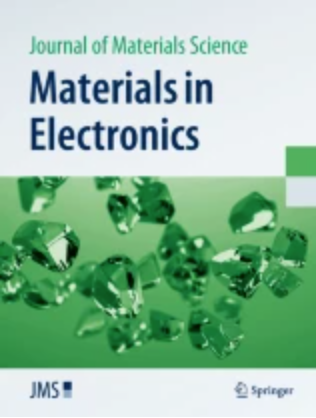Bi-doped cobalt ferrite nanoparticles for electromagnetic interference (EMI) shielding applications
Abstract
Herein, we synthesized bismuth (Bi)-doped CoFe2O4 nanoparticles using the sol–gel auto-combustion method. X-ray diffraction pattern confirmed the formation of a cubic spinel structure in all samples where crystallite size ranged between 37.03 and 30.03 nm. The lattice parameter ranged between 8.393 and 8.409 Å except for the composition, x = 0.1. Fourier transform infrared spectra revealed the presence of octahedral and tetrahedral vibrational bands of 480–473 cm−1 and 605–588 cm−1, respectively. The Scanning Electron Microscopy and Transmission Electron Microscopy revealed the formation of irregular grains. Energy-dispersive X-ray spectra validated the chemical purity of all the samples. The magnetic studies revealed an increase in saturation magnetization from 54.828 to 79.713 emu/g with the increase in doping concentration due to the spin canting effect. The microwave properties showed a decrease in magnetic loss from 0.198 to 0.132 with an increase in Bi content, whereas dielectric loss increased from 0.242 to 0.422. EMI shielding analysis showed an increase in the shielding effect due to reflection from 9.398 to 10.373 dB with increasing doping concentration. Thus, the prepared samples paved a way for the application of Bi-doped cobalt ferrite in EMI shielding with improved magnetic and electric properties at high frequency.

 求助内容:
求助内容: 应助结果提醒方式:
应助结果提醒方式:


